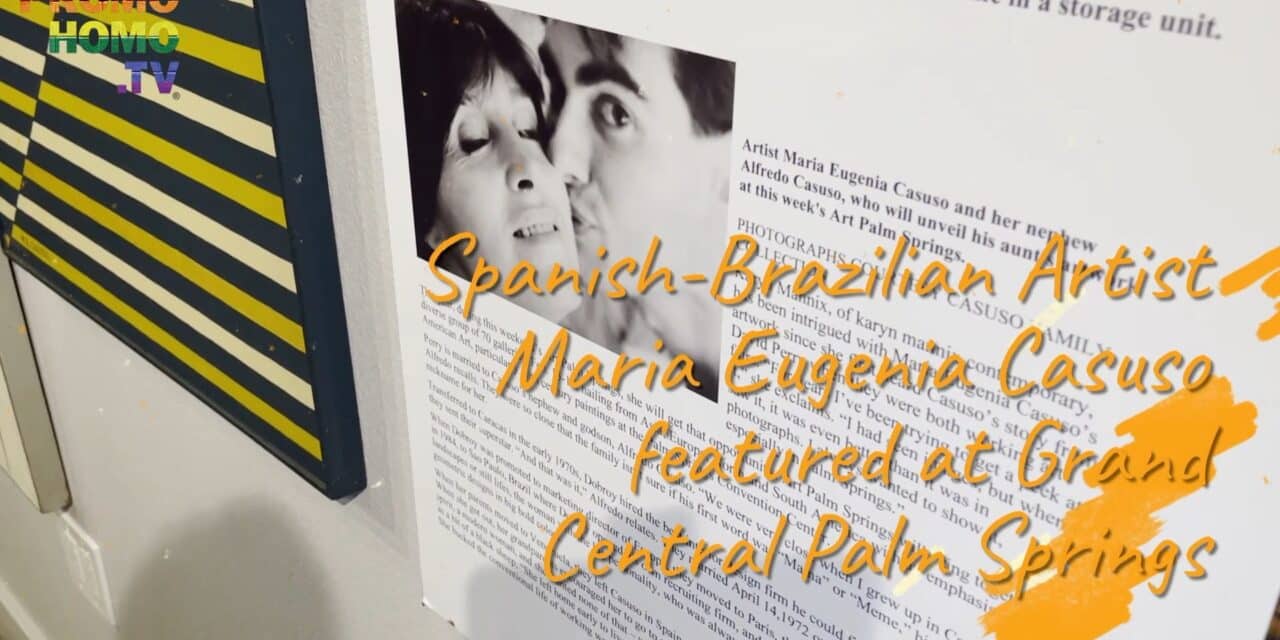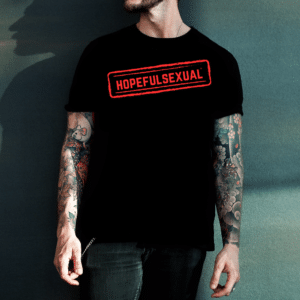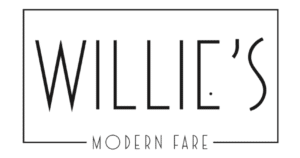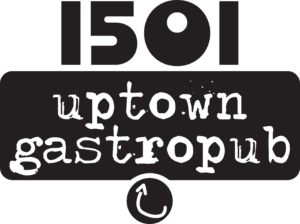For the serious collector, it is even rarer to discover an artist hitherto unknown – an artist who is so completely of a time and place. Such an artist is Spanish/Brazilian painter María Eugenia Casuso, featured through March, 2023 in the special event and party space at the iconic Grand Central Palm Springs. Nicholas Snow and Hot in Palm Springs were on location at the opening reception to capture the excitement.
“It is rare for an artist to possess such a profound graphic language, to release ego and face art like a faithful servant – like a saint, or a zen master. María Eugenia Casuso is one of those rare artists who fits that mold” wrote Jacob Klintowitz, Panamericana Escola del Arte e Design – São Paulo, Brasil.
“2023 is off to a great start, and people clearly are ready to be back in classic Palm Springs style,” said Rita Capponi, founder and co-owner of Grand Central noting that Grand Central was just named one of Yelp’s Top 100 Brunch Spots in California. “Palm Springs has a unique, casual but sophisticated clientele, and that’s the sort of experience we offer at Grand Central, including a dining room and special event space filled with art.”
Along with the Mid Century Modernist colorful geographic work of the late Maria Eugenia Casuso, who died from pancreatic cancer in 2008, Grand Central’s gallery space continues to feature work by two local artists: Georgeanne Papac and Gary Paterson. All of the work is on sale, with 10 % of all sales from Casuso’s work benefiting the Pancreatic Cancer Foundation.
My aunt was an incredibly talented artist,” says Alfredo Casuso, who along with his husband David Perry are collaborating with Grand Central Palm Springs. “When we opened the crates from Brazil, we were astounded by the output. We had no idea this much of her art had remained, unknown for so many years, in storage.”
Born in Santander, on Spain’s northern coast on the Gulf of Biscay, María Eugenia Casuso emigrated as a teenager to Venezuela with her parents. There she studied art and interior design at the renowned Emma Illes Art Academy in Caracas. Referred by the Director of the Academy, she started her professional vocation, rising quickly to the top of her career at Decovensa, one of Venezuela’s most sought-after interior design firms where she worked for 10 years.
These were “the boom years” in Venezuela, and María Eugenia’s unique talents were called upon for some of the country’s most important companies. In 1972 she became a Venezuelan citizen and married Andras Dobroy: a Hungarian / Brazilian executive, the head of Marketing for Chrysler Europe and himself a one time film actor of some repute in his native Hungary. The couple lived in Paris and Brussels for several years before moving to São Paulo in 1978. There María Eugenia began a period of intense creativity resulting in her participation in popular contemporary exhibitions at the Galería Porta, Rio Claro and Americana galleries in São Paulo followed by her one solo exhibition in Galería de Arte André.
“The theme of María Eugenia’s work is the structure of space, the rhythmic possibilities of the heart, and geometry,” wrote Jacob Klintowitz, Director of the prestigious Panamericana Escola del Arte e Design in São Paulo. “She thinks of the canvas as a deterministic universe in which shapes evolve in harmonious movements. The juxtaposition of these shapes creates a visual rhythm and gently guides the eyes of the viewer. Other times, the shape turns in an apparently infinite space like a dancing goddess creating the reality of the world. They are shapes living in a spontaneous and predetermined dialog. Her paintings seem effortless, yet it is evident that their creation required tremendous concentration, a laborious study of geometric matters, and a vital energy of astonishing proportions. Hers is a form of painting which is organized, severe, detailed and planned. Yet, that rigor doesn’t affect the feeling that they are only possible through existential examination. The shapes may dance in space, yet they are tied to an expert and sensuous thought.”
Inexplicably, María Eugenia stopped painting after 1987, although astute buyers and designers sought her out over the years, she having produced a considerable body of work that still graces homes, offices and corporate lobbies throughout Brazil.
Diagnosed with pancreatic cancer in July 2007, she died surrounded by family in January 2008. In the intervening decade, a hitherto unknown trove of María Eugenia’s art was discovered. Now, this unique artist makes her North American debut – truly something special for the discerning collector.
Resources:
Don’t miss an episode! Like, Follow and Subscribe…
Become a PromoHomo.TV® Superstar
CELEBRATING THE PROMOHOMO.TV® SUPERSTARS
Creatives and those who love them are familiar with crowdfunding platforms used to offer perks to donors who support a film or television project. Similarly, to serve as the cornerstone for the long-term success of PromoHomo.TV®, Snow encourages viewers to donate in support of the free programming with a voluntary monthly subscription. He calls these donors the PromoHomo.TV® Superstars.
The most popular subscription level is $10/month (the Skip-a-Latte Club), but some give up to $100/month (Associate Producers), and Snow recently introduced the Holler for a Dollar level. Subscribers who give $1.00 a month get a shout out on an episode after they subscribe. Some levels include merch but anyone can get the clothing on Amazon at this link.
As 2023 begins, there are 30 patrons (technically around 34 since some of them have partners) who give a total of $492/month. To join the PromoHomo.TV® Superstars visit www.Patreon.com/PromoHomoTV. To meet them, go to www.PromoHomo.TV/Superstars.
















